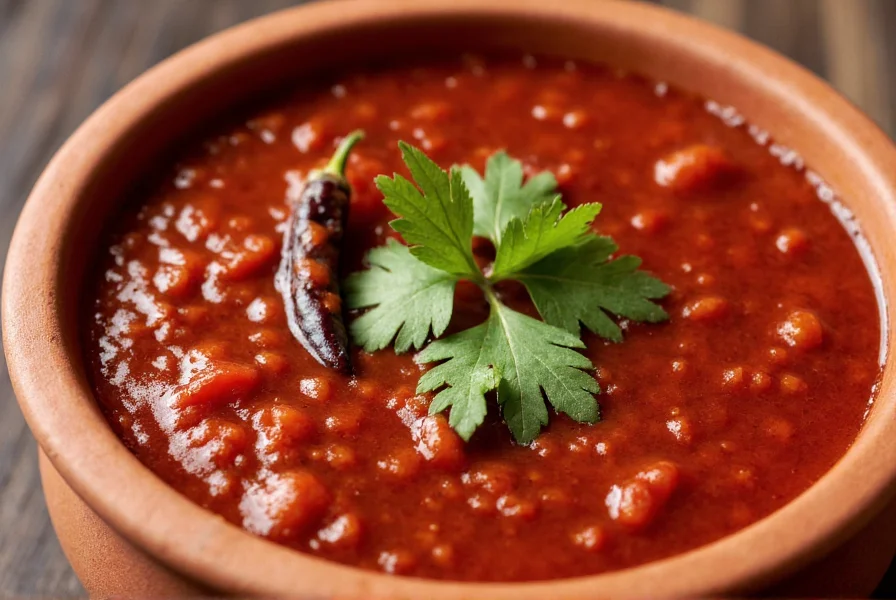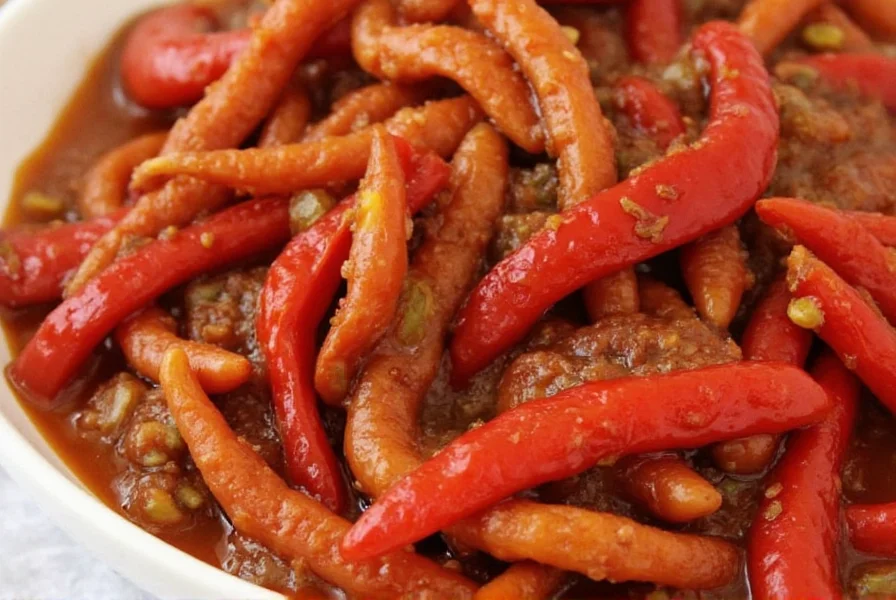Adobo chili represents one of the most misunderstood yet essential ingredients in Latin American cuisine. This moist seasoning blend transforms ordinary dishes into authentic culinary experiences through its unique combination of rehydrated chilies, aromatic spices, and tangy vinegar base. Unlike the dry chili powder commonly found in American pantries, adobo chili delivers a complex flavor profile that balances heat, acidity, and earthiness.
Understanding Adobo Chili: Origins and Evolution
The term "adobo" comes from the Spanish word "adobar," meaning "to marinate." This preservation technique traveled across continents during colonial times, evolving differently in various regions. In Mexico, adobo chili developed as a method to preserve dried chilies by reconstituting them with vinegar and spices. The Filipino adobo, while sharing the name, represents a completely different preparation using soy sauce and vinegar.
Authentic Mexican adobo chili typically features guajillo or ancho chilies as the base, blended with garlic, cumin, oregano, and vinegar. This creates a thick, paste-like sauce that serves multiple culinary purposes—from marinade to cooking sauce to flavor enhancer.

Adobo Chili vs. Regular Chili Powder: Key Differences
Many home cooks confuse adobo chili with standard chili powder, but these ingredients serve distinctly different purposes in cooking:
| Characteristic | Adobo Chili | Regular Chili Powder |
|---|---|---|
| Form | Moist sauce or paste | Dry powder |
| Base Ingredient | Rehydrated dried chilies | Ground dried chilies |
| Flavor Profile | Complex, tangy, layered | Simpler, primarily earthy heat |
| Additional Ingredients | Garlic, vinegar, oregano, cumin | Often just ground chilies |
| Primary Use | Marinades, cooking sauces | Dry rubs, spice blends |
Authentic Adobo Chili Ingredients Breakdown
The magic of adobo chili lies in its carefully balanced ingredients. Traditional recipes include:
- Dried chilies (typically guajillo, ancho, or pasilla) - provide the foundational heat and earthiness
- Vinegar - adds necessary acidity and acts as a preservative
- Garlic - contributes aromatic depth
- Oregano (Mexican variety) - adds distinctive herbal notes
- Cumin - provides warm, earthy complexity
- Black pepper - enhances overall flavor profile
- Salt - balances and intensifies other flavors
Commercial versions like the popular canned chipotles in adobo often include additional ingredients like sugar or preservatives, which alter the authentic flavor profile. For the most genuine adobo chili experience, homemade preparation using dried chilies yields superior results.
How to Use Adobo Chili in Your Cooking
Adobo chili's versatility makes it valuable for numerous culinary applications. Understanding how to incorporate this ingredient properly elevates your cooking significantly.
When working with adobo chili, remember that a little goes a long way due to its concentrated flavor. Start with one tablespoon per serving and adjust to taste. The vinegar content means it integrates well with both slow-cooked dishes and quick sautés.

Popular Applications for Adobo Chili
- Meat marinades - particularly effective with chicken, pork, and beef
- Bean dishes - adds depth to refried beans or bean soups
- Sauces and stews - forms the flavor base for many Mexican dishes
- Vegetable roasting - toss vegetables in diluted adobo before roasting
- Breakfast applications - mix into scrambled eggs or breakfast potatoes
Simple Adobo Chili Chicken Recipe
This straightforward recipe demonstrates adobo chili's transformative power:
- Combine 1 cup adobo chili sauce, 2 tablespoons lime juice, and 1 teaspoon smoked paprika
- Marinate 4 chicken thighs for at least 2 hours (overnight for best results)
- Remove chicken from marinade, reserving excess sauce
- Sear chicken in hot skillet until golden brown on both sides
- Pour reserved sauce over chicken and simmer covered for 25 minutes
- Garnish with fresh cilantro and serve with rice and beans
This preparation showcases how adobo chili creates complex flavors with minimal effort. The sauce tenderizes the chicken while imparting its distinctive tangy, smoky flavor throughout the dish.
Finding and Storing Adobo Chili
Locating authentic adobo chili requires knowing where to look. Most major supermarkets carry canned chipotles in adobo near the Mexican food section, but dedicated Latin American markets offer superior quality options.
When purchasing, check the ingredient list for minimal additives. The best products list only chilies, vinegar, garlic, and spices without unnecessary preservatives or sweeteners.
Proper storage extends adobo chili's shelf life significantly. Once opened, transfer to an airtight container and refrigerate for up to two weeks. For longer storage, freeze in ice cube trays then transfer frozen cubes to freezer bags—this allows you to use precise amounts as needed.
Adobo Chili Substitutions
When authentic adobo chili isn't available, consider these alternatives:
- Mix 2 tablespoons chili powder + 1 tablespoon vinegar + 1 clove minced garlic + 1/2 teaspoon oregano
- Combine chipotle powder with tomato paste and vinegar (1:2 ratio)
- Create a quick version using smoked paprika, garlic powder, and apple cider vinegar
While these substitutes won't perfectly replicate authentic adobo chili, they provide acceptable alternatives when the genuine article isn't accessible. Remember that the vinegar component is crucial for capturing adobo's distinctive tang.
Conclusion: Embracing Adobo Chili's Culinary Potential
Adobo chili represents far more than just another spice—it's a gateway to authentic Latin American flavors. By understanding its unique characteristics and proper applications, home cooks can dramatically expand their culinary repertoire. Whether used as a marinade, sauce base, or flavor enhancer, adobo chili adds complexity and depth that transforms ordinary meals into extraordinary dining experiences. Start experimenting with small amounts to discover how this versatile ingredient can elevate your cooking to new heights.
Frequently Asked Questions
What's the difference between adobo and chipotle in adobo?
Adobo refers to the vinegar-based sauce with spices, while "chipotle in adobo" specifically means smoked jalapeños preserved in that adobo sauce. You can have adobo sauce without chipotles, but chipotle in adobo always contains both elements.
Can I make my own adobo chili sauce at home?
Yes, authentic adobo chili sauce can be made by rehydrating dried chilies (like guajillo or ancho), then blending them with garlic, vinegar, Mexican oregano, cumin, and salt. Simmer the mixture for 15-20 minutes to develop flavors, then blend until smooth.
How spicy is adobo chili compared to regular chili powder?
Adobo chili typically has moderate heat (2,500-8,000 Scoville units) depending on the chilies used, while regular chili powder ranges from mild to medium (500-5,000 Scoville). The vinegar in adobo can make the heat feel more pronounced initially, though it mellows during cooking.
What dishes work best with adobo chili?
Adobo chili excels in slow-cooked dishes like carnitas, braised meats, and bean dishes. It's also excellent in marinades for grilled chicken or pork, and adds depth to soups, stews, and even roasted vegetables. Traditional Mexican dishes like chiles en nogada and mole often incorporate adobo elements.
Does adobo chili need to be cooked before eating?
While adobo chili can be eaten raw (as in some salsas), cooking significantly improves its flavor profile. The heat mellows the vinegar's sharpness and allows the spices to fully integrate with other ingredients. For most applications, incorporating adobo chili into cooked dishes yields the best results.











 浙公网安备
33010002000092号
浙公网安备
33010002000092号 浙B2-20120091-4
浙B2-20120091-4